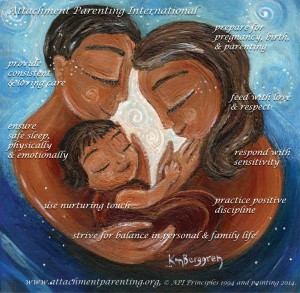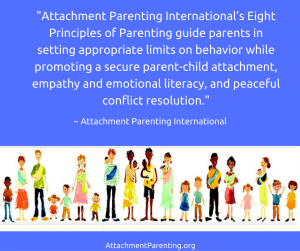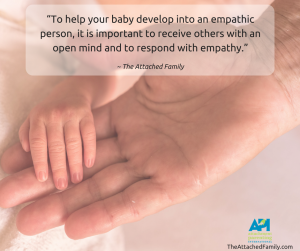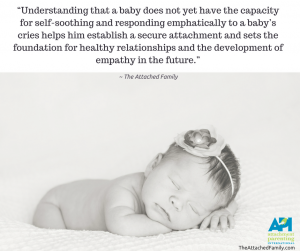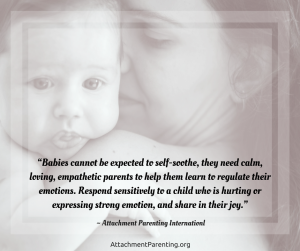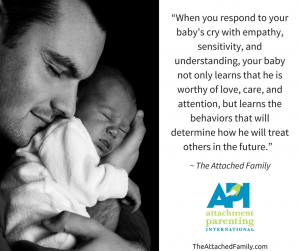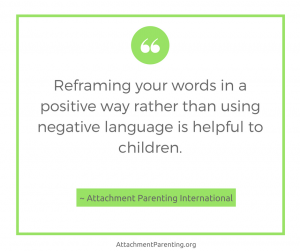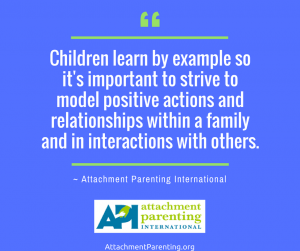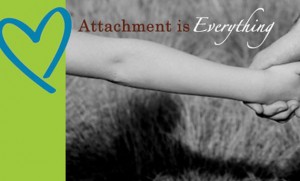 Have you ever tried to explain to someone what attachment parenting is? Parenting is very personal, and it’s not so easy to describe any approach to raising children given the amount of emotional baggage, future hopes, joys, and trials there are wrapped up in that one word, “parenting.”
Have you ever tried to explain to someone what attachment parenting is? Parenting is very personal, and it’s not so easy to describe any approach to raising children given the amount of emotional baggage, future hopes, joys, and trials there are wrapped up in that one word, “parenting.”
But as I was contemplating today about how much Attachment Parenting International and attachment parenting means to me and my family, how it literally changed the very direction of my life — personally and professionally — not to mention, given my children the quality of lives they enjoy, I came up with a word that sums up what attachment parenting is in my home: “sweetness.”
It really is just about treating my children with the sweetness of attachment.
I received one of those fun challenges on Facebook a few days ago where you ask your children a series of questions and then post exactly what they say. The first question was, “What do you hear me say the most?” Other Facebook friend’s posts had responses like “clean your room,” “dang it,” or “supper’s ready.” More curious of what my kids would say, rather than posting their responses on Facebook, I decided to ask them the questions.
And here’s what they said:
- What is something I say a lot? I love you
- What makes me happy? When we make you food and give you wildflowers (Nathan, 6), When we don’t yell and we follow the rules (Emily, 10), When we give you hugs (Rachel, 11)
- What makes me sad? When you’re sick and you want to do something excited that day (Rachel), When you have to postpone something because it just won’t work out and it was going to be really fun (Emily)
- What’s my favorite thing to do? Spend time with us (Nathan), Pet the cat (Rachel), Cuddle with us (Emily)
- Do I have a favorite child? No! But if you did, it would be Rachel-Emily-Nathan-Kate (Kate is my angel baby)
- If I could go anywhere, where would it be? To a chocolate factory made of chocolate in a chocolate land in a chocolate world
- Do you think you could live without me? No! Well, I guess we could, but it would be really, really sad (Emily) Yeah, it’d be a sad life (Nathan) I mean, we could still be alive but it wouldn’t be a really happy life (Rachel)
- How do you annoy me? By yelling, screaming, or interrupting you when you’re doing work
- What scares me? If we’re quiet in the bath tub and you hear no splashing or rippling or anything
- How do you describe me? A nice mom, the best mom in the world! With dark hair, dark curly hair, dark short curly hair. A person who likes being warm.
Now, isn’t that sweetness? And you may think that all children would say nice things about their parents, and gosh, I hope so!
But my point is, the overall atmosphere in my home is sweetness and peace and love. My oldest is now 11, and my youngest is 6. I’m well past the early years of attachment parenting, but for all the intensity of breastfeeding, cosleeping, responding sensitively, and learning gentle discipline, attachment parenting has since become a lifestyle.
Attachment parenting has become a mindset that directs my thoughts and actions with everyone, not just my kids and husband but my friends, coworkers, and strangers. In all my interactions with others — and with myself — I strive for the sweetness of attachment.


